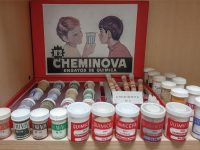
More than two decades ago the Public Engagement with Science and Technology (PEST) paradigm gained influence in the field of science communication, marked by the publication of the third report of the House of Lords Select Committee on Science and Technology in the year 2000. The approach advocated in the report went beyond the traditional Public Understanding of Science (PUS) paradigm that had focused on sharing scientific knowledge with broader publics via top-down dissemination. It assigned citizens a more active and powerful role vis a vis science, emphasized the need for participatory discourses aiming at a shared understanding with non-scientific publics, and acknowledged both citizens’ democratic rights regarding science-related decisions and their potential constructive contributions in the creation of socially relevant knowledge.
While the PUS approach was based on the quite plausible assumption that scientific knowledge is specialist knowledge, not readily accessible for non-scientists, and produced by an autonomous self-referential societal subsystem, the PEST approach focused on the social practices through which science is embedded in society – as stakeholder, innovator, policy advisor, and threat to everyday knowledge and traditional values. Without doubt, PEST was a significant advancement of the restricted epistemic perspective of PUS.
Critics of the PUS model claimed that scientists were misguided by an empirically wrong and normatively inacceptable «deficit model». According to that model, conflicts with the public resulted from the public’s knowledge deficit. Scientists thus conceptualized public communication as one-way knowledge flow from science to public, assigning the public an inferior receptive role, and framing the relationship as paternalistic. A collateral damage of the criticism was its generalization to any form of top-down science popularization or provision of expertise. Rhetorically distancing from the deficit model has become an identity marker of the science communication community.
How far has the PEST perspective influenced research and practice of science communication? While some publications in the relevant scientific journals take participatory public engagement seriously, most articles are still concerned with public acceptance of scientific claims; this is particular obvious in the fields of COVID-19 and climate change. These articles take for granted that science is right and that the problem is to persuade the public to adopt the scientific view. Is this perspective different from the deficit model attributed to PUS?
One may defend the persuasion approach as a necessity but I wonder about its compatibility with the widely accepted PEST model, in particular regarding the use of persuasive means such as emotions, likability of communicators, and suggestive narratives/frames that can hardly count as arguments in a discourse in which the public is treated as equal partner on eye-level.
Pragmatically the contradiction seems to be mitigated by the ambiguity of the term «public engagement». While keeping the original rhetoric, the participatory impetus of the House of Lords Select Committee’s public engagement approach has largely been softened into traditional educational and public image-building goals. Some scholars nowadays use «public engagement» as an umbrella term for old and new forms of interaction between science and publics – scientists’ media interviews, websites, social media activities, science festivals, and citizen science, for example. If we include «public education» as legitimate goal and mediated communication as acceptable means of PEST, the contradiction disappears. However, then we have to view PEST as an extension of PUS rather than as an alternative paradigm – a perspective that I find plausible. And the term PEST would lose any specificity as a particular paradigm within the field of science communication.
Several authors have acknowledged the need for different science communication models accounting for the diversity of issues, publics and situations, and suggested classifications of them. What we need is a more realistic view of the limits of participatory communication, and more honesty and openness in describing and justifying the models that we use.





